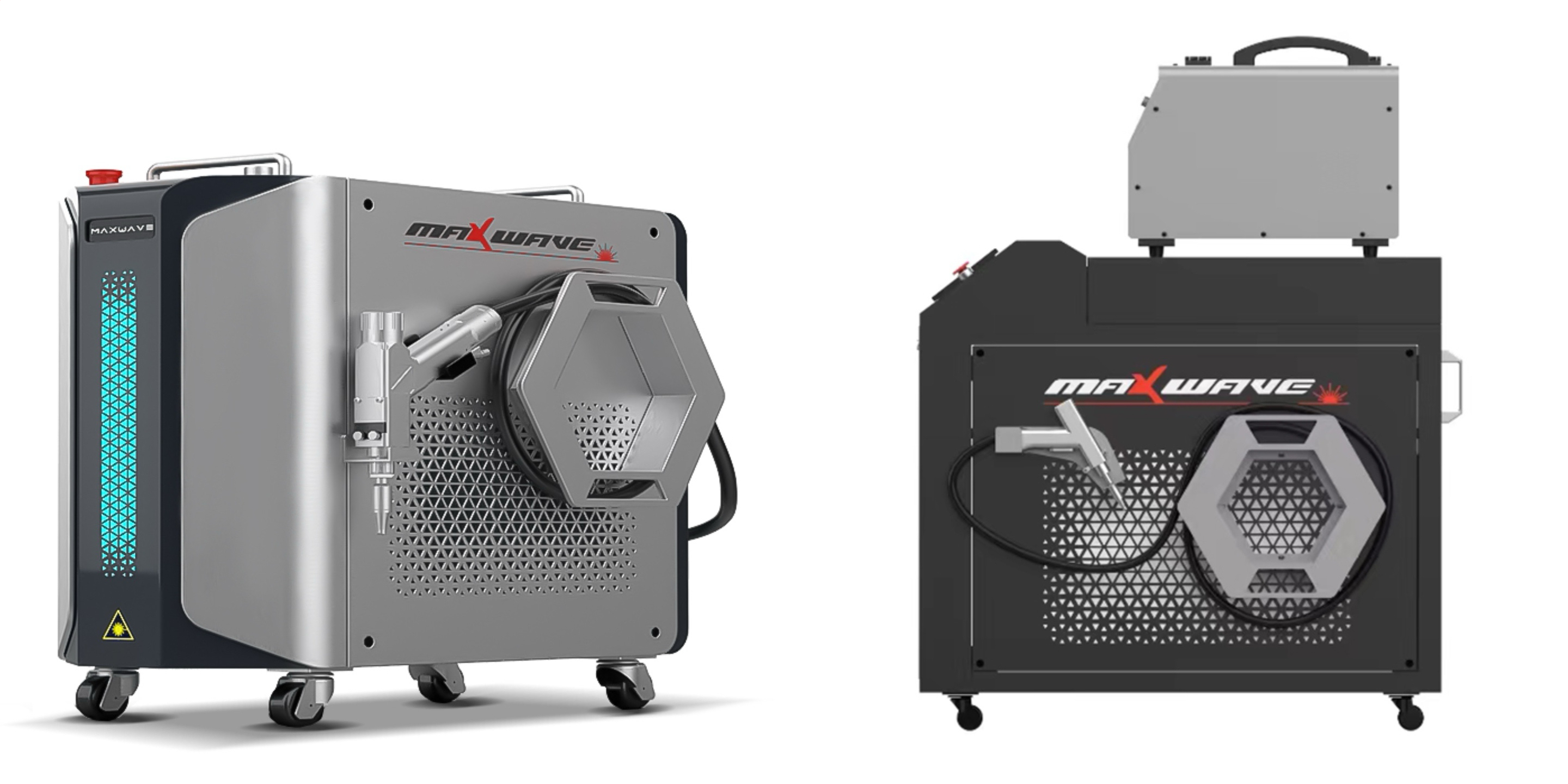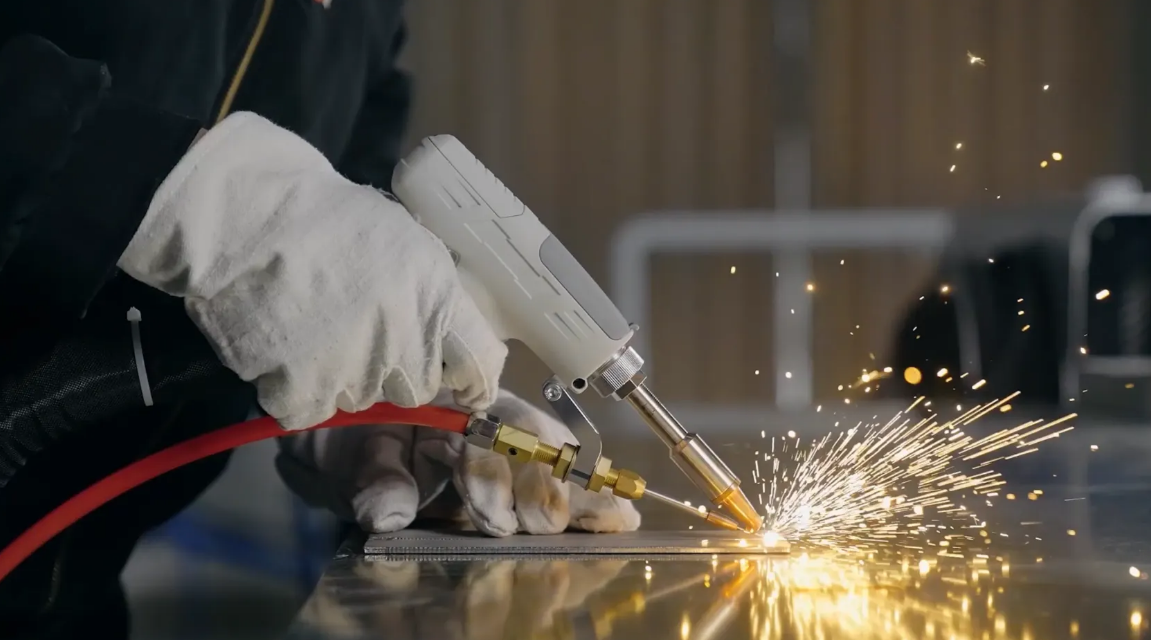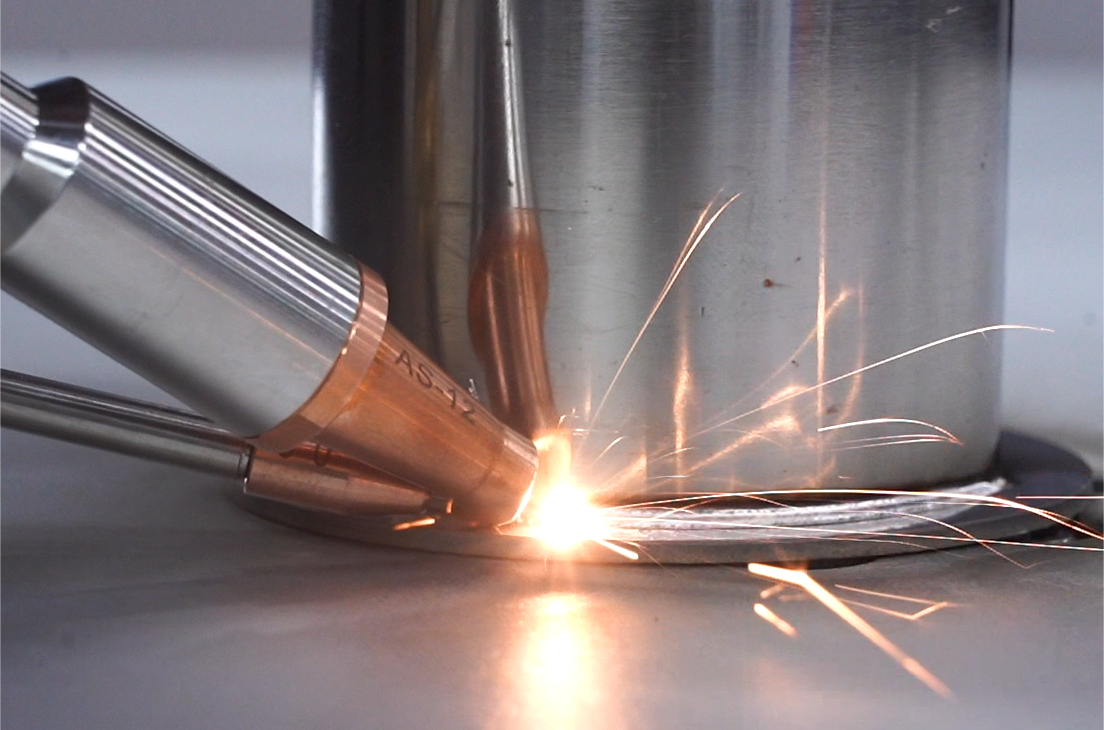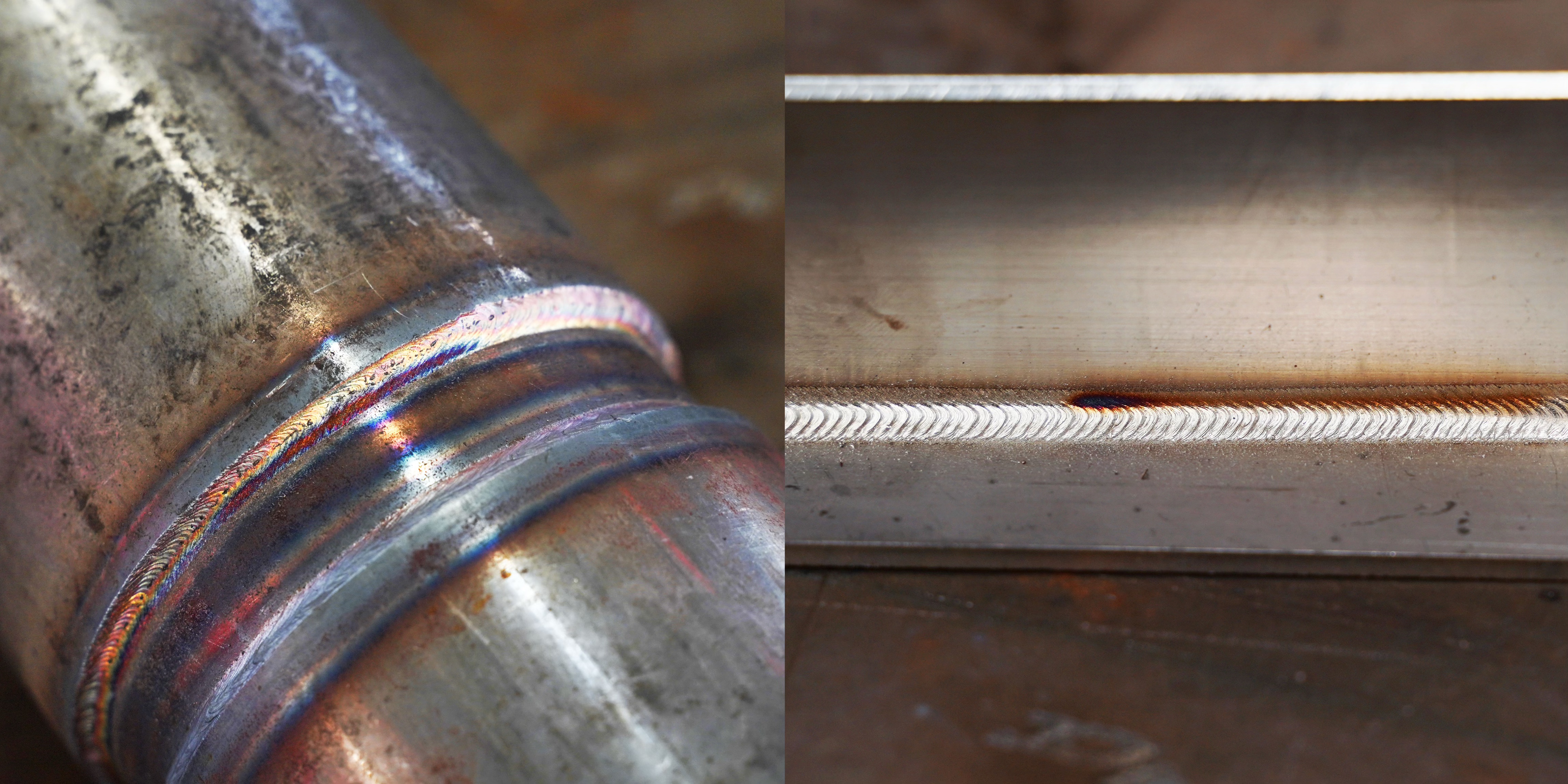In modern manufacturing, handheld laser welding machines are becoming the preferred choice across various industries due to their efficiency, precision, and ease of use. As they gradually replace traditional welding methods, many businesses and craftsmen face the challenge of selecting the right machine from the vast range of options available on the market.
In this article, we’ve compiled a list of the top 10 best handheld laser welding machines, providing insights into their features, advantages, and ideal applications to help you make an informed purchasing decision.
Top 10 Best Handheld Laser Welding Machines
Handheld laser welding machines are transforming the welding industry with their precision, speed, and flexibility. Here are the top 10 models, including their key specifications and features to help you choose the right one.
1. MaxWave MW-HW Series
- Power: 800W 2000W
- Wavelength: 1070nm
- Welding Thickness: Up to 8mm steel
- Fiber Cable Length: 10m standard (up to 15m)
- Cooling: Air-cooled
- Applications: Welding, cutting, cleaning
- Weight: From 52kg
2. Han’s Laser HWL Series
- Power Options: 1000W, 1500W, 2000W
- Welding Speed: Up to 120 mm/s
- Fiber Cable Length: 10m standard (up to 15m)
- Cooling: Water-cooled
- Weight: 275kg
3. Coherent HighLight FL-ARM
- Power: Up to 8000W
- Beam Quality: <2 mm·mrad
- Modulation: Up to 5 kHz
- Focal Spot Size: 50-1000 μm
- Applications: Welding, cutting, cladding
4. TRUMPF TruLaser Station 7000
- Working Area: 300 x 300 x 500 mm
- Laser Power: Up to 1000W
- Positioning Accuracy: ±0.05 mm
- Welding Speed: Up to 10 m/min
- Features: Integrated camera system
5. Raycus RFL-C1500H
- Output Power: 1500W
- Beam Quality: <1.5 mm·mrad
- Modulation Frequency: 50 Hz – 20 kHz
- Cooling Method: Air cooling
- Weight: 45kg
6. nLIGHT alta™ Fiber Laser
- Power Range: 500W – 12kW
- Back Reflection Resistance: Up to 100%
- Modulation Rate: Up to 100 kHz
- Beam Parameter Product: <1.1 mm·mrad
- Features: Integrated power meter
7. Laserline LDM Series
- Power: 1000W – 20kW
- Wavelength Options: 808nm, 940nm, 980nm, 1020nm, 1060nm
- Beam Quality: 30 – 100 mm·mrad
- Modulation: Up to 20 kHz
- Applications: Welding, cladding, hardening
8. AMADA WELD TECH LF Series
- Power Options: 300W, 500W, 700W
- Pulse Energy: Up to 75J
- Pulse Width: 0.2 – 50 ms
- Fiber Delivery: 5m standard (up to 20m)
- Features: Integrated vision system
9. Rofin StarWeld Performance
- Laser Type: Nd:YAG
- Pulse Peak Power: 10 kW
- Pulse Energy: 100 J
- Pulse Duration: 0.5 – 20 ms
- Welding Spot Diameter: 0.2 – 2.0 mm
10. OR Laser EVO MOBILE
- Laser Power: 150W
- Pulse Frequency: Single shot up to 20 Hz
- Pulse Peak Power: 7.5 kW
- Focal Length: 150mm
- Weight: 45kg (laser unit)
Choosing the right handheld laser welding machine depends on your specific needs, whether it’s power, speed, or versatility. With these top models, you can achieve high-quality welding results, improve efficiency, and stay ahead in the industry.
Comparison of Top Models
| Model | Power Output | Cooling System | Welding Thickness | Size | Weight | Price Range |
|---|---|---|---|---|---|---|
| MaxWave MW-HW1500 | 1500W | Air-cooled | Up to 8mm (for stainless steel) | 770 x 470 x 600 mm | 120 kg | $4,300 – $5,700 |
| STYLECNC 1000W | 1000W | Water-cooled | 0.5-2mm (for stainless steel) | 560 x 660 x 1150 mm | 120 kg | $5,200 – $6,000 |
| IPG Photonics LaserCube 1500W | 1500W | Air-cooled | Up to 3mm (for stainless steel) | 450 x 550 x 970 mm | 65 kg | ~$6,500 |
| TRUMPF TruLaser Weld 5000 | 5000W | Water-cooled | Up to 8mm (for steel) | 2500 x 1500 x 2200 mm | 3000 kg | >$28,900 |
| Coherent HighLight FL-ARM 2000 | 2000W | Water-cooled | Up to 5mm (for steel) | 1100 x 800 x 1400 mm | 300 kg | >$15,780 |
Key Differentiating Factors When Choosing:
The power output of handheld laser welders ranges from 1000W to 5000W. This directly affects the welding speed and depth. Higher power improves performance, but it’s important to match the power with the material thickness.
Cooling systems play an important role in maintaining efficiency. Air-cooled systems offer portability, while water-cooled systems are better for long-term use. I’ve seen how air-cooled systems make models like the MaxWave MW-HW1500 welding machine easy to carry. However, models like TRUMPF’s TruLaser Weld 5000, with water cooling, provide better thermal management, making them ideal for heavy-duty tasks.
Size and weight are also important. Small models like IPG Photonics fit well in small workshops, while larger models are better suited for industrial environments. Prices vary from budget-friendly options at $3,200 to high-end models exceeding $28,900, catering to both small workshops and large manufacturers.
Future Trends in Handheld Laser Welding
Future trends in handheld laser welding include:
Advanced Beam Shaping
Programmable optics revolutionize welding machine by enabling dynamic control of the laser beam profile, allowing you to fine-tune energy distribution for a wide range of materials and joint geometries. Whether you’re working with delicate electronics or robust industrial components, optimizing energy distribution for different materials and joint geometries. ensures optimal precision, efficiency, and weld quality—every single time.
AI-assisted Welding
Welding machine learning algorithms transform welding precision by analyzing real-time sensor data, automatically adjusting parameters to adapt to variations in material properties or joint fit-up. Imagine a welding machine that learns as it works—delivering flawless results, even with complex geometries or unpredictable conditions. This cutting-edge technology ensures consistent quality, reduces errors, and boosts efficiency, making it the ultimate tool for modern manufacturing challenges.
Enhanced Safety Features
Integrated sensors and smart interlocks take welding safety to the next level, offering enhanced protection against accidental exposure. Imagine a system where augmented reality (AR) displays overlay real-time safety information directly into your field of view—alerting you to potential hazards before they become risks. This cutting-edge combination of technology not only safeguards operators but also boosts confidence and efficiency, making welding safer and smarter than ever before.
IoT Connectivity
Cloud-based monitoring and data analytics unlock the future of welding, enabling predictive maintenance, process optimization, and seamless integration with broader manufacturing systems. Imagine a world where your welding equipment anticipates issues before they occur, fine-tunes performance in real-time, and effortlessly syncs with your entire production line. This powerful combination not only minimizes downtime and maximizes efficiency but also transforms welding into a smarter, more connected experience—revolutionizing the way we build and create.
Market Trends in Handheld Laser Welding
The handheld laser welding machine market is projected to grow at a CAGR of 8.5% from 2023 to 2030, driven by increasing demand for precision and efficiency. Portable models now account for over 40% of sales, with power outputs ranging from 1000W to 5000W and welding thickness capabilities up to 8mm. Integration of AI and cloud-based systems is expected to boost operational efficiency by 20-30%, while the Asia-Pacific region leads adoption with a 35% market share. Additionally, eco-friendly models are reducing energy consumption by 15-20%, aligning with global sustainability goals.
Summry
As handheld laser welding technology continues to evolve, its impact on various industries is undeniable. The growing market demand reflects their increasing importance in modern manufacturing, offering businesses a competitive edge through improved productivity and reduced operational costs. Whether you’re an entrepreneur looking to enhance your workshop or an industrial manufacturer seeking high-performance solutions, investing in the right handheld laser welding machine can be a game-changer. For more details about handheld laser welding machine or to get a quote, contact us today!





Recent Comments